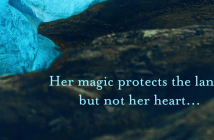 Some of us are compelled to read about tragedies and those who survived them. If you’re one of those readers, you might want to pick up Gae Polisner’s new YA novel The Memory of Things.
Some of us are compelled to read about tragedies and those who survived them. If you’re one of those readers, you might want to pick up Gae Polisner’s new YA novel The Memory of Things.
The Memory of Things tells the story of Kyle, a 16 year old who has just watched the first of the twin towers come crashing down. While racing home in a panic he stumbles across a girl wearing a pair of costume wings and covered in ash. He decides to bring the girl home and what unfolds from there is a story of friendship, love, and the strength of the human spirit to carry-on amid life-altering tragedy.
The Memory of Things will hit shelves on September 6. For more on Gae Polisner, check out her website or follow her on .
What was your inspiration for telling this story?
As a native New Yorker (I had lived in NYC for years before moving back to Long Island when my son was born), I was drawn to write about 9/11 since it had happened, but originally knew it was just too soon.
Then, a few years ago, I was finishing up another manuscript when an image came to me, just popped in my head: a girl, crouched in fear, covered in smoke and ash, but wearing a pair of costume wings. She was originally on a NYC subway track in my head, and not on the Brooklyn Bridge where Kyle finds her in The Memory of Things.
Right around the same time, a dear friend of mine had a sudden bout of “transient global amnesia”. She was driving to work, forgot where she was going, basically forgot who she was, yet somehow knew to call her husband, and kind of knew who he was. It freaked us all out. The bout passed after a few days.
So, the girl came to me. And then that happened. And that’s when I knew the girl had the same issue: that she had some form of amnesia, and that, along with Kyle, I was going to have to figure out who she was.
What motivated you to tell Kyle’s story in the backdrop of 9/11?
Like I said, 9/11 had been circulating . . . When the girl appeared covered in smoke and ash, I knew what it was, and I knew the chaos of that day, and the days that followed, was the only backdrop for this story.
Although it feels like time stops, life continues on in the midst of a tragedy like 9/11. What do you think is important when it comes to telling stories set during an event such as 9/11?
For me, that’s just it: I wanted to grapple with how we keep going – how we carry on with the small bits of living – in the middle of such a tragedy. For example, as the morning of 9/11 was unfolding, I frantically picked up my two young sons from school and, when we got home, we played Wiffle ball on the front lawn. I knew I couldn’t go inside, turn on the television and have them see the images of what had happened – so we stayed outside, playing ball, while chaos and tragedy unfolded in nearby Manhattan. I had a hard time focusing, of course, and was trying to reach people on my cell phone, but I didn’t want them to be scared. I didn’t want them to know what was going on.
The synopsis of The Memory of Things states that this is a story of hope. What do you hope readers take away from Kyle’s story?
Mostly, I hope people take away a feeling from the story, a gut sense that it will always be our small and big human connections that keep us going. And that, taking the focus off ourselves – as Kyle does with and for the girl and Uncle Matt – is one of the things that helps most in the midst of tragedy. We are strongest when we are helping others.
What was your process for writing The Memory of Things? Did you do anything differently than with your previous books?
What is this process you speak of? ☺
But, I suppose, yes, because The Memory of Things is “historical” fiction, and because 9/11 was a uniquely documented event in our history, the research was way more intensive. I spent hours pouring through photographs, watching footage, checking timelines, as well as interviewing people and walking neighborhoods: the Brooklyn Bridge to Manhattan, Brooklyn Heights, and, of course, Coney Island.
There are many YA readers who vividly remember where they were and what they were during when the twin towers fell while there are also many YA readers who are too young to remember 9/11 and some who weren’t even born yet. What do you think it is about historical events – good or bad – that have the power to transcend generations?
Yes, there’s a divide: For adults, 9/11 still feels fresh, the ever-present backdrop of our lives. Conversely, young adults, students in middle and high school, weren’t even alive then, or too young to remember, yet it is the backdrop to their lives too. So there’s a disconnect. They know it, but don’t feel it, and, from the teens I’ve talked to, they want to understand better, they want to truly “get” what happened on that day, and the days after.
Is there anything else you’d like readers to know?
I guess I’d love readers to know this is first and foremost a story, a bit of a mystery, romance, and coming of age story all in one. It’s set against 9/11, but that’s not all it is. It’s the characters, and not the event, that drive the story. And there is just as much light here as there is dark, so I think you’ll find moments you smile, and laugh out loud, right along with the characters. I hope you do.






2 Comments
Pingback: What YA books release this week? (September 6) - YA Interrobang
Pingback: A Wave of 9/11 Novels Seeks a New Audience: the Young Reader - Sokolako